ICGOO在线商城 > 集成电路(IC) > PMIC - 稳压器 - DC DC 开关稳压器 > LT1617ES5-1#TRMPBF
- 型号: LT1617ES5-1#TRMPBF
- 制造商: LINEAR TECHNOLOGY
- 库位|库存: xxxx|xxxx
- 要求:
| 数量阶梯 | 香港交货 | 国内含税 |
| +xxxx | $xxxx | ¥xxxx |
查看当月历史价格
查看今年历史价格
LT1617ES5-1#TRMPBF产品简介:
ICGOO电子元器件商城为您提供LT1617ES5-1#TRMPBF由LINEAR TECHNOLOGY设计生产,在icgoo商城现货销售,并且可以通过原厂、代理商等渠道进行代购。 LT1617ES5-1#TRMPBF价格参考。LINEAR TECHNOLOGYLT1617ES5-1#TRMPBF封装/规格:PMIC - 稳压器 - DC DC 开关稳压器, Boost, Cuk, Charge Pump Switching Regulator IC Negative Adjustable -1V 1 Output 75mA (Switch) SOT-23-5 Thin, TSOT-23-5。您可以下载LT1617ES5-1#TRMPBF参考资料、Datasheet数据手册功能说明书,资料中有LT1617ES5-1#TRMPBF 详细功能的应用电路图电压和使用方法及教程。
| 参数 | 数值 |
| 产品目录 | 集成电路 (IC) |
| 描述 | IC REG INV ADJ 0.1A TSOT23-5 |
| 产品分类 | |
| 品牌 | Linear Technology |
| 数据手册 | http://www.linear.com/docs/3201 |
| 产品图片 |
|
| 产品型号 | LT1617ES5-1#TRMPBF |
| PWM类型 | - |
| rohs | 无铅 / 符合限制有害物质指令(RoHS)规范要求 |
| 产品系列 | - |
| 供应商器件封装 | TSOT-23-5 |
| 其它名称 | LT1617ES5-1#TRMPBFDKR |
| 包装 | Digi-Reel® |
| 同步整流器 | 无 |
| 安装类型 | 表面贴装 |
| 封装/外壳 | SOT-23-5 细型,TSOT-23-5 |
| 工作温度 | -40°C ~ 85°C |
| 标准包装 | 1 |
| 电压-输入 | 1 V ~ 15 V |
| 电压-输出 | 可调至 -34V |
| 电流-输出 | 100mA |
| 类型 | 反相 |
| 输出数 | 1 |
| 输出类型 | 可调式 |
| 频率-开关 | - |

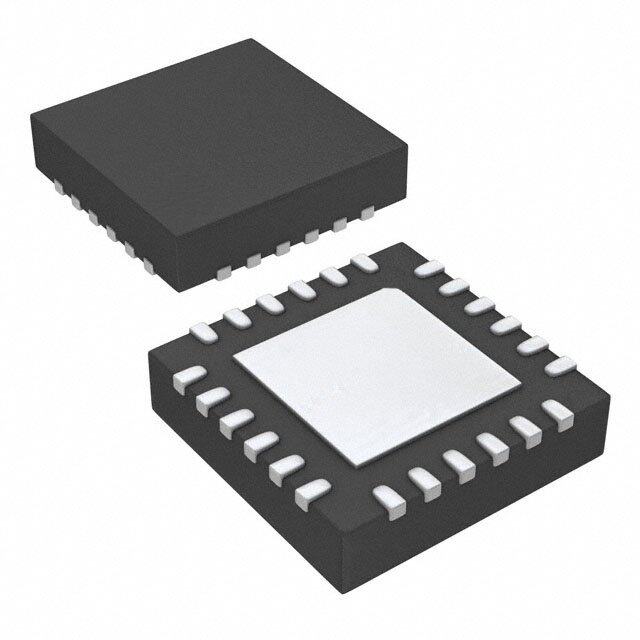
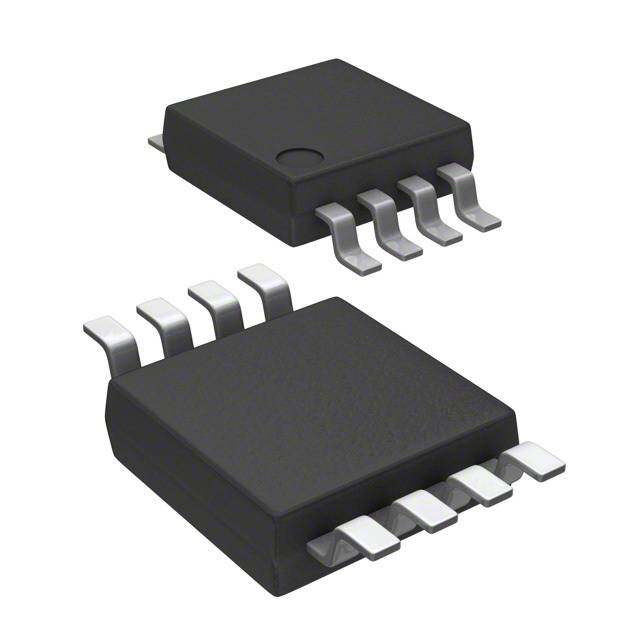






- 商务部:美国ITC正式对集成电路等产品启动337调查
- 曝三星4nm工艺存在良率问题 高通将骁龙8 Gen1或转产台积电
- 太阳诱电将投资9.5亿元在常州建新厂生产MLCC 预计2023年完工
- 英特尔发布欧洲新工厂建设计划 深化IDM 2.0 战略
- 台积电先进制程称霸业界 有大客户加持明年业绩稳了
- 达到5530亿美元!SIA预计今年全球半导体销售额将创下新高
- 英特尔拟将自动驾驶子公司Mobileye上市 估值或超500亿美元
- 三星加码芯片和SET,合并消费电子和移动部门,撤换高东真等 CEO
- 三星电子宣布重大人事变动 还合并消费电子和移动部门
- 海关总署:前11个月进口集成电路产品价值2.52万亿元 增长14.8%


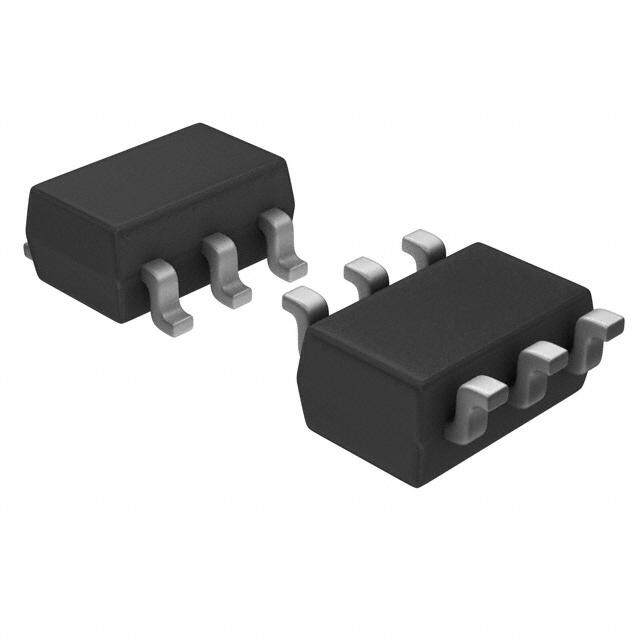
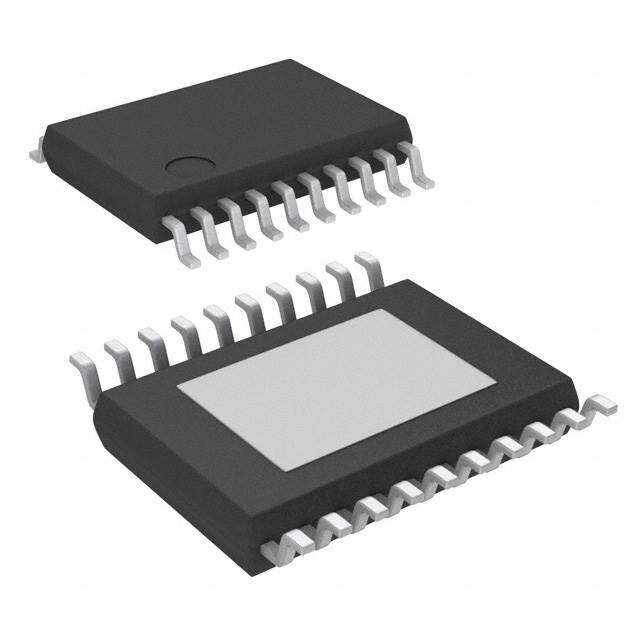
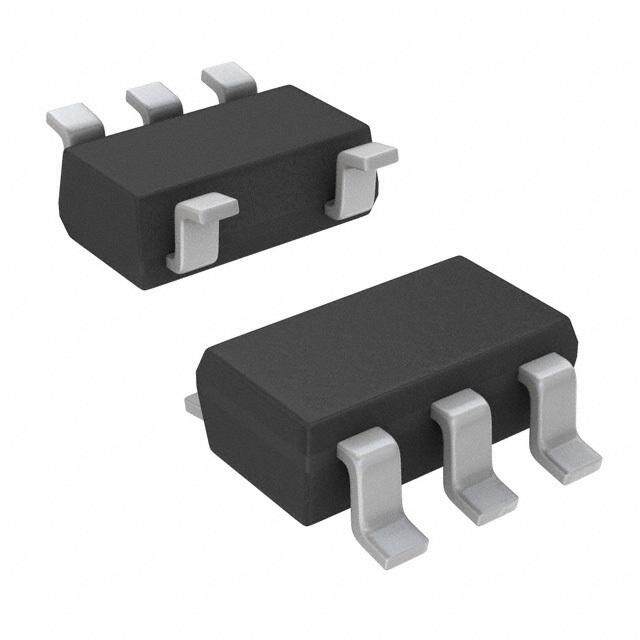

PDF Datasheet 数据手册内容提取
LT1617/LT1617-1 Micropower Inverting DC/DC Converters in SOT-23 FEATURES DESCRIPTIOU n Low Quiescent Current: The LT®1617/LT1617-1 are micropower inverting DC/DC m 20 A in Active Mode converters in a 5-lead SOT-23 package. The LT1617 is m <1 A in Shutdown Mode designed for higher power systems with a 350mA current n Operates with V as Low as 1V limit and an input voltage range of 1.2V to 15V, whereas IN n Low V Switch: 250mV at 300mA the LT1617-1 is intended for lower power and single-cell CESAT n Uses Small Surface Mount Components applications with a 100mA current limit and an extended n High Output Voltage: Up to –34V input voltage range of 1V to 15V. Otherwise, the two n Tiny 5-Lead SOT-23 Package devices are functionally equivalent. Both devices feature a quiescent current of only 20m A at no load, which further reduces to 0.5m A in shutdown. A current limited, fixed off- APPLICATIOU S time control scheme conserves operating current, result- ing in high efficiency over a broad range of load current. n LCD Bias The 36V switch allows high voltage outputs up to –34V to n Handheld Computers be easily generated without the use of costly transformers. n Battery Backup The LT1617’s low off-time of 400ns permits the use of n Digital Cameras tiny, low profile inductors and capacitors to minimize footprint and cost in space-conscious portable applications. , LTC and LT are registered trademarks of Linear Technology Corporation. TYPICAL APPLICATIOUN 1-Cell Li-Ion to –15V Inverting Converter Efficiency C3 80 L1 0.22µF L2 22µH 22µH 2.5V TO 4V.2IVN –1125mVA 75 VIN = 4.2V 5 1 VIN LT1617 SW D1 267k C2 CY (%) 70 VIN = 2.5V 4 SHDN NFB 3 4.7µF CIEN 65 C1 GND 24.9k EFFI 60 4.7µF 2 55 C1: TAIYO YUDEN LMK316BJ475 1617/-1 TA01 C2: TAIYO YUDEN EMK316BJ475 C3: TAIYO YUDEN TMK316BJ224 50 0.1 1 10 30 L1, L2: MURATA LQH3C220K34 D1: MOTOROLA MBR0530 LOAD CURRENT (mA) 1617/-1 TA01a 1
LT1617/LT1617-1 ABSOLUTE WAXIWUW RATIUGS PACKAGE/ORDER IUFORWATIOU (Note 1) ORDER PART VIN, SHDN Voltage................................................... 15V TOP VIEW NUMBER SW Voltage.............................................................. 36V SW 1 5 VIN LT1617ES5 NFB Voltage.............................................................–3V GND 2 LT1617ES5-1 Current into NFB Pin.............................................–1mA NFB 3 4 SHDN Junction Temperature...........................................125(cid:176) C S5 PACKAGE S5 PART MARKING Operating Temperature Range (Note 2).. –40(cid:176) C to 85(cid:176) C 5-LEAD PLASTIC SOT-23 Storage Temperature Range................. –65(cid:176) C to 150(cid:176) C TJMAX = 125(cid:176)C, q JA = 256(cid:176)C/W LTKF Lead Temperature (Soldering, 10 sec)..................300(cid:176) C LTKA Consult factory for Industrial and Military grade parts. ELECTRICAL CHARACTERISTICS The l denotes the specifications which apply over the full operating temperature range, otherwise specifications are at T = 25(cid:176) C. V = 1.2V, V = 1.2V unless otherwise noted. A IN SHDN PARAMETER CONDITIONS MIN TYP MAX UNITS Minimum Input Voltage LT1617-1 1.0 V LT1617 1.2 V Quiescent Current Not Switching 20 30 m A V = 0V 1 m A SHDN FB Comparator Trip Point l –1.205 –1.23 –1.255 V FB Comparator Hysteresis 8 mV Output Voltage Line Regulation 1.2V < V < 12V 0.05 0.1 %/V IN FB Pin Bias Current (Note 3) V = –1.23V l 1.3 2 2.7 m A NFB Switch Off Time 400 ns Switch V I = 60mA (LT1617-1) 85 120 mV CESAT SW I = 300mA (LT1617) 250 350 mV SW Switch Current Limit LT1617-1 75 100 125 mA LT1617 300 350 400 mA SHDN Pin Current V = 1.2V 2 3 m A SHDN V = 5V 8 12 m A SHDN SHDN Input Voltage High 0.9 V SHDN Input Voltage Low 0.25 V Switch Leakage Current Switch Off, V = 5V 0.01 5 m A SW Note 1: Absolute Maximum Ratings are those values beyond which the life of a device may be impaired. Note 2: The LT1617 and LT1617-1 are guaranteed to meet specifications from 0(cid:176) C to 70(cid:176) C. Specifications over the –40(cid:176) C to 85(cid:176) C operating temperature range are assured by design, characterization and correlation with statistical process controls. Note 3: Bias current flows out of the NFB pin. 2
LT1617/LT1617-1 TYPICAL PERFORW AU CE CHARACTERISTICS Switch Saturation Voltage Feedback Pin Voltage and (V ) Bias Current Quiescent Current CESAT 0.60 –1.25 5 25 0.55 VFB = 1.23V NOT SWITCHING TAGE (V) 000...544050 ISWITCH = 500mA LTAGE (V)––11..2243 VOLTAGE 43 BIAS CU µRRENT (A) 2231 SWITCH VOL 0000....33225050 ISWITCH = 300mA FEEDBACK VO––11..2221 CURRENT 21 RRENT (A)µ QUIESCENT CU 1197 VIN = 1V2INV = 1.2V 0.15 0.10 –1.20 0 15 –50 –25 0 25 50 75 100 –50 –25 0 25 50 75 100 –50 –25 0 25 50 75 100 TEMPERATURE (°C) TEMPERATURE (°C) TEMPERATURE (°C) 1617/-1 G01 1617/-1 G02 1617/-1 G03 Switch Off Time Switch Current Limit Shutdown Pin Current 550 400 25 VIN = 12V 350 ME (ns) 540500 LIMIT (mA) 320500 LT1617 VIN = 1.2V µRRENT (A) 2105 WITCH OFF TI 430500 VIN = 1V.I2NV = 12V CH CURRENT 210500 LT1617-1 VIN = 12V DOWN PIN CU 10 25°C 100°C S 300 SWIT 100 VIN = 1.2V SHUT 5 50 250 0 0 –50 –25 0 25 50 75 100 –50 –25 0 25 50 75 100 0 5 10 15 TEMPERATURE (°C) TEMPERATURE (°C) SHUTDOWN PIN VOLTAGE (V) 1617/-1 G04 1617/-1 G05 1617/-1 G06 PIU FUUCTIOUS SW (Pin 1): Switch Pin. This is the collector of the internal V - 1.23 NPN power switch. Minimize the metal trace area con- OUT R1= nected to this pin to minimize EMI. ( ) 1.23 + 2•10- 6 GND (Pin 2): Ground. Tie this pin directly to the local R2 ground plane. SHDN (Pin 4): Shutdown Pin. Tie this pin to 0.9V or higher NFB (Pin 3): Feedback Pin. Set the output voltage by to enable the device. Tie below 0.25V to turn off the device. selecting values for R1 and R2 (see Figure 1): V (Pin 5): Input Supply Pin. Bypass this pin with a IN capacitor as close to the device as possible. 3
LT1617/LT1617-1 BLOCK DIAGRAW C3 L1 L2 VIN VOUT D1 C1 VIN SHDN SW C2 5 4 1 R5 R6 80k 80k A1 + ENABLE – Q1 Q2 400ns Q3 X10 ONE-SHOT DRIVER R3 RESET VOUT 60k + R1 R4 0.12Ω (EXTERNAL) NFB 280k 3 – 42mV* A2 R2 (EXTERNAL) GND 2 1617/-1 BD * 12mV FOR LT1617-1 Figure 1. LT1617 Block Diagram OPERATIOU The LT1617 uses a constant off-time control scheme to inductors L1 and L2 begins ramping up. Once the switch provide high efficiencies over a wide range of output current reaches 350mA, comparator A2 resets the one- current. Operation can be best understood by referring to shot, which turns off Q3 for 400ns. L2 continues to deliver the block diagram in Figure 1. Q1 and Q2 along with R3 and current to the output while Q3 is off. Q3 turns on again and R4 form a bandgap reference used to regulate the output the inductor currents ramp back up until the switch voltage. When the voltage at the NFB pin is slightly below current reaches 350mA, then A2 again resets the one- –1.23V, comparator A1 disables most of the internal shot. This switching action continues until the output circuitry. Output current is then provided by capacitor C2, voltage is charged up (until the NFB pin reaches –1.23V), which slowly discharges until the voltage at the NFB pin then A1 turns off the internal circuitry and the cycle goes above the hysteresis point of A1 (typical hysteresis repeats. The LT1617-1 operates in the same manner, at the NFB pin is 8mV). A1 then enables the internal except the switch current is limited to 100mA (the A2 circuitry, turns on power switch Q3, and the current in reference voltage is 12mV instead of 42mV). 4
LT1617/LT1617-1 APPLICATIOUS IUFORWATIOU Choosing an Inductor For higher output voltages, the formula above will give large inductance values. For a 2V to 20V converter (typical Several recommended inductors that work well with the LCD bias application), a 47m H inductor is called for with LT1617 and LT1617-1 are listed in Table 1, although there the above equation, but a 10m H or 22m H inductor could be are many other manufacturers and devices that can be used without excessive reduction in maximum output used. Consult each manufacturer for more detailed infor- current. mation and for their entire selection of related parts. Many different sizes and shapes are available. Use the equations Inductor Selection—Inverting Charge Pump Regulator and recommendations in the next few sections to find the correct inductance value for your design. For the inverting regulator, the voltage seen by the internal power switch is equal to the sum of the absolute value of Table 1. Recommended Inductors the input and output voltages, so that generating high PART VALUE (m H) MAX DCR (W ) VENDOR output voltages from a high input voltage source will often LQH3C4R7 4.7 0.26 Murata exceed the 36V maximum switch rating. For instance, a LQH3C100 10 0.30 (714) 852-2001 12V to –30V converter using the inverting topology would LQH3C220 22 0.92 www.murata.com generate 42V on the SW pin, exceeding its maximum CD43-4R7 4.7 0.11 Sumida CD43-100 10 0.18 (847) 956-0666 rating. For such a system, an inverting charge pump is the CDRH4D18-4R7 4.7 0.16 www.sumida.com best topology. CDRH4D18-100 10 0.20 The formula below calculates the approximate inductor DO1608-472 4.7 0.09 Coilcraft DO1608-103 10 0.16 (847) 639-6400 value to be used for an inverting charge pump regulator D01608-223 22 www.coilcraft.com using the LT1617. As for the boost inductor selection, a larger or smaller value can be used. For designs with Inductor Selection—Inverting Regulator varying V such as battery powered applications, use the IN The formula below calculates the appropriate inductor minimum V value in the equation below. IN value to be used for an inverting regulator using the LT1617 or LT1617-1 (or at least provides a good starting V - V ( +) V OUT INMIN D point). This value provides a good tradeoff in inductor size L= t OFF I and system performance. Pick a standard inductor close LIM to this value (both inductors should be the same value). A Current Limit Overshoot larger value can be used to slightly increase the available output current, but limit it to around twice the value For the constant off-time control scheme of the LT1617, calculated below, as too large of an inductance will in- the power switch is turned off only after the 350mA (or crease the output voltage ripple without providing much 100mA) current limit is reached. There is a 100ns delay additional output current. A smaller value can be used between the time when the current limit is reached and (especially for systems with output voltages greater than when the switch actually turns off. During this delay, the 12V) to give a smaller physical size. Inductance can be inductor current exceeds the current limit by a small calculated as: amount. The peak inductor current can be calculated by: (cid:230) V +V (cid:246) (cid:230) V - V (cid:246) L=2(cid:231)(cid:231) OUIT D (cid:247)(cid:247) tOFF IPEAK =ILIM+Ł(cid:231) IN(MAXL) SATł(cid:247) 100ns Ł LIM ł Where V = 0.25V (switch saturation voltage). The where V = 0.4V (Schottky diode voltage), I = 350mA or SAT D LIM current overshoot will be most evident for systems with 100mA, and t = 400ns. OFF high input voltages and for systems where smaller induc- 5
LT1617/LT1617-1 APPLICATIOUS IUFORWATIOU tor values are used. This overshoot can be beneficial as it Diode Selection helps increase the amount of available output current for For most LT1617 applications, the Motorola MBR0520 smaller inductor values. This will be the peak current seen surface mount Schottky diode (0.5A, 20V) is an ideal by the inductor (and the diode) during normal operation. choice. Schottky diodes, with their low forward voltage For designs using small inductance values (especially at drop and fast switching speed, are the best match for the input voltages greater than 5V), the current limit over- LT1617. For higher output voltage applications the 30V shoot can be quite high. Although it is internally current MBR0530 can be used. Many different manufacturers limited to 350mA, the power switch of the LT1617 can make equivalent parts, but make sure that the component handle larger currents without problem, but the overall is rated to handle at least 0.5A. For LT1617-1 applications, efficiency will suffer. Best results will be obtained when a Phillips BAT54 or a Central Semiconductor CMDSH-3 I is kept below 700mA for the LT1617 and below PEAK works well. 400mA for the LT1617-1. Lowering Output Voltage Ripple Capacitor Selection Using low ESR capacitors will help minimize the output Low ESR (Equivalent Series Resistance) capacitors should ripple voltage, but proper selection of the inductor and the be used at the output to minimize the output ripple voltage. output capacitor also plays a big role. The LT1617 pro- Multilayer ceramic capacitors are the best choice, as they vides energy to the load in bursts by ramping up the have a very low ESR and are available in very small inductor current, then delivering that current to the load. packages. Their small size makes them a good companion If too large of an inductor value or too small of a capacitor to the LT1617’s SOT-23 package. Solid tantalum capaci- value is used, the output ripple voltage will increase tors (like the AVX TPS, Sprague 593D families) or OS-CON because the capacitor will be slightly overcharged each capacitors can be used, but they will occupy more board burst cycle. To reduce the output ripple, increase the area than a ceramic and will have a larger ESR. Always use output capacitor value or add a 100pF feed-forward ca- a capacitor with a sufficient voltage rating. pacitor in the feedback network of the LT1617 (see the Ceramic capacitors also make a good choice for the input circuits in the Typical Applications section). Adding this decoupling capacitor, which should be placed as close as small, inexpensive 100pF capacitor will greatly reduce the possible to the LT1617. A 4.7m F input capacitor is suffi- output voltage ripple. cient for most applications. Table 2 shows a list of several capacitor manufacturers. Consult the manufacturers for more detailed information and for their entire selection of related parts. Table 2. Recommended Capacitors CAPACITOR TYPE VENDOR Ceramic Taiyo Yuden (408) 573-4150 www.t-yuden.com Ceramic AVX (803) 448-9411 www.avxcorp.com Ceramic Murata (714) 852-2001 www.murata.com 6
LT1617/LT1617-1 TYPICAL APPLICATIOUS 5V to –5V Inverting Converter C3 L1 0.47µF L2 10µH 10µH VIN –5V 5V 100mA 5 1 100pF VIN SW D1 73.2k LT1617 C2 4 3 10µF SHDN NFB C1 GND 24.9k 4.7µF 2 C1: TAIYO YUDEN LMK316BJ475 (408) 573-4150 1617/-1 TA02 C2: TAIYO YUDEN JMK316BJ106 (408) 573-4150 C3: TAIYO YUDEN EMK212BJ474 (408) 573-4150 L1, L2: MURATA LQH3C100K24 (814) 237-1431 D1: MOTOROLA MBR0520 (800) 441-2447 –33V Inverting Charge Pump Converter C3 10Lµ1H 0.22µF D2 VIN –33V 5V 20mA 5 1 VIN SW D1 619k LT1617 C2 4 3 1µF SHDN NFB C1 GND 24.9k 4.7µF 2 C1: TAIYO YUDEN LMK316BJ475 (408) 573-4150 1617/-1 TA03 C2: TAIYO YUDEN GMK316BJ105 (408) 573-4150 C3: TAIYO YUDEN GMK212BJ224 (408) 573-4150 L1: MURATA LQH3C100K24 (814) 237-1431 D1: MOTOROLA MBR0540 (800) 441-2447 1-Cell to –9V Inverting Converter C3 L1 0.22µF L2 47µH 47µH VIN –9V 1V TO 1.5V 2.5mA 5 1 VIN SW D1 150k LT1617-1 C2 4 3 4.7µF SHDN NFB C1 GND 24.9k 4.7µF 2 C1: TAIYO YUDEN LMK316BJ475 (408) 573-4150 1617/-1 TA02 C2: TAIYO YUDEN EMK316BJ475 (408) 573-4150 C3: TAIYO YUDEN TMK316BJ224 (408) 573-4150 L1, L2: MURATA LQH3C470K34 (814) 237-1431 D1: CENTRAL SEMICONDUCTOR CMDSH-3 (516) 435-1110 Information furnished by Linear Technology Corporation is believed to be accurate and reliable. However, no 7 responsibility is assumed for its use. Linear Technology Corporation makes no representation that the interconnection of its circuits as described herein will not infringe on existing patent rights.
LT1617/LT1617-1 TYPICAL APPLICATIOUS – 20V Dual Output Converter with Load Disconnect D3 20V 4mA C3 C5 D2 1µF 1µF C4 10Lµ1H 1µF D1 VIN –20V 1.5V TO 5V 4mA 5 1 100pF VIN SW D4 267k LT1617 C2 4 3 1µF SHDN NFB C1 GND 24.9k 4.7µF 2 C1: TAIYO YUDEN LMK316BJ475 (408) 573-4150 1617/-1 TA04 C2, C3, C4: TAIYO YUDEN TMK316BJ105 (408) 573-4150 C5: TAIYO YUDEN LMK212BJ105 (408) 573-4150 L1: MURATA LQH3C100K24 (814) 237-1431 D1, D2, D3, D4: MOTOROLA MBR0530 (800) 441-2447 PACKAGE DESCRIPTIOU Dimensions in millimeters (inches) unless otherwise noted. S5 Package 5-Lead Plastic SOT-23 (LTC DWG # 05-08-1633) 2.60 – 3.00 (0.102 – 0.118) 2.80 – 3.00 1.50 – 1.75 0.00 – 0.15 0.90 – 1.45 (0.110 – 0.118) (0.059 – 0.069) (0.00 – 0.006) (0.035 – 0.057) (NOTE 3) 0.10 – 0.60 (0.004 – 0.024) 0.09 – 0.20 0.35 – 0.50 0.90 – 1.30 0.95 REF (0.004 – 0.008) (0.014 – 0.020) (0.035 – 0.051) 1.90 (0.037) (NOTE 2) FIVE PLACES (NOTE 2) S5 SOT-23 0797 (0.074) REF NOTE: REF 1. DIMENSIONS ARE IN MILLIMETERS 2. DIMENSIONS ARE INCLUSIVE OF PLATING 3. DIMENSIONS ARE EXCLUSIVE OF MOLD FLASH AND METAL BURR 4. MOLD FLASH SHALL NOT EXCEED 0.254mm 5. PACKAGE EIAJ REFERENCE IS SC-74A (EIAJ) RELATED PARTS PART NUMBER DESCRIPTION COMMENTS LT1307 Single-Cell Micropower 600kHz PWM DC/DC Converter 3.3V at 75mA from One Cell, MSOP Package LT1316 Burst ModeTM Operation DC/DC with Programmable Current Limit 1.5V Minimum, Precise Control of Peak Current Limit LT1317 2-Cell Micropower DC/DC with Low-Battery Detector 3.3V at 200mA from Two Cells, 600kHz Fixed Frequency LT1610 Single-Cell Micropower DC/DC Converter 3V at 30mA fro 1V, 1.7MHz Fixed Frequency LT1611 1.4MHz Inverting Switching Regulator in 5-Lead SOT-23 –5V at 150mA from 5V Input, Tiny SOT-23 Package LT1613 1.4MHz Switching Regulator in 5-Lead SOT-23 5V at 200mA from 3.3V Input, Tiny SOT-23 Package LT1615 Micropower DC/DC Converter in 5-Lead SOT-23 20V at 12mA from 2.5V Input, Tiny SOT-23 Package Burst Mode is a trademark of Linear Technology Corporation 8 Linear Technology Corporation 16171f LT/TP 0200 4K • PRINTED IN USA 1630 McCarthy Blvd., Milpitas, CA 95035-7417 (408) 432-1900 l FAX: (408) 434-0507 l w ww.linear-tech.com ª LINEAR TECHNOLOGY CORPORATION 1999
Mouser Electronics Authorized Distributor Click to View Pricing, Inventory, Delivery & Lifecycle Information: A nalog Devices Inc.: LT1617ES5 LT1617ES5-1#PBF LT1617ES5#TRM LT1617ES5-1#TR LT1617ES5-1#TRPBF LT1617ES5#TRMPBF LT1617ES5#TRPBF LT1617ES5#TR LT1617ES5-1#TRM LT1617ES5-1 LT1617ES5-1#TRMPBF LT1617ES5#PBF
/LT1617ES5-1#TRMPBF.jpg)
 Datasheet下载
Datasheet下载

